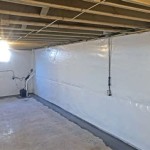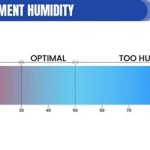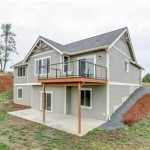Essential Aspects of Waterproof Paint For Basement Walls
Basements, often prone to moisture and water seepage, require special attention to maintain structural integrity and prevent costly damage. Waterproof paint emerges as a viable solution for combating this challenge, offering effective protection against water penetration and enhancing basement functionality.
Types of Waterproof Paint
Several types of waterproof paints are available, each tailored to specific basement conditions:
- Acrylic Waterproof Paint: Water-based, easy to apply, and suitable for low to moderate moisture environments.
- Epoxy Waterproof Paint: Highly durable, chemical-resistant, and ideal for high-moisture areas, such as laundry rooms and bathrooms.
- Polyurethane Waterproof Paint: Extremely durable, abrasion-resistant, and suitable for areas prone to heavy water exposure.
Features to Consider
When selecting waterproof paint for basement walls, consider the following features:
- Moisture Resistance: Opt for paint with high moisture resistance to effectively prevent water penetration.
- Vapor Permeability: Choose paint that allows moisture vapor to escape, preventing condensation and mold growth.
- Durability: Ensure the paint is durable enough to withstand the harsh conditions of a basement environment.
- Toxicity: Select low-VOC (volatile organic compounds) paint to minimize health risks and ensure indoor air quality.
Surface Preparation
Proper surface preparation is crucial for successful application:
- Clean the walls thoroughly to remove dirt, dust, and any loose or flaking paint.
- Repair cracks, holes, or imperfections using a suitable patching compound.
- Allow the surface to dry completely before painting.
Application Techniques
Follow these steps for effective application:
- Stir the paint thoroughly before use.
- Apply a primer specifically designed for waterproofing applications to enhance adhesion.
- Apply two coats of waterproof paint, allowing each coat to dry completely.
- Avoid painting in excessively wet or cold conditions.
Additional Considerations
In addition to paint, consider these additional measures to enhance waterproofing:
- Install a sump pump to remove excess water.
- Ensure proper drainage around the foundation.
- Use dehumidifiers to control moisture levels.
Conclusion
Waterproof paint for basement walls provides an effective solution to combat moisture and water penetration. By understanding the types, features, and application techniques of waterproof paint, you can effectively protect your basement, enhance its functionality, and prevent costly damage.

The Case Against Waterproof Paints Wall Coatings Why Fail What To Do Instead

The Case Against Waterproof Paints Wall Coatings Why Fail What To Do Instead

The Case Against Waterproof Paints Wall Coatings Why Fail What To Do Instead

Waterproofing Basement Walls With Drylok Paint Home Repair Tutor

Advances In Spray Applied Basement Coatings Waterproof Magazine

The Case Against Waterproof Paints Wall Coatings Why Fail What To Do Instead

Waterproof Your Basement

The Right Wrong Way To Waterproof Your Basement Wall

The Case Against Waterproof Paints Wall Coatings Why Fail What To Do Instead

Waterproof Or Waterproofing Paint For Basement Walls
See Also








